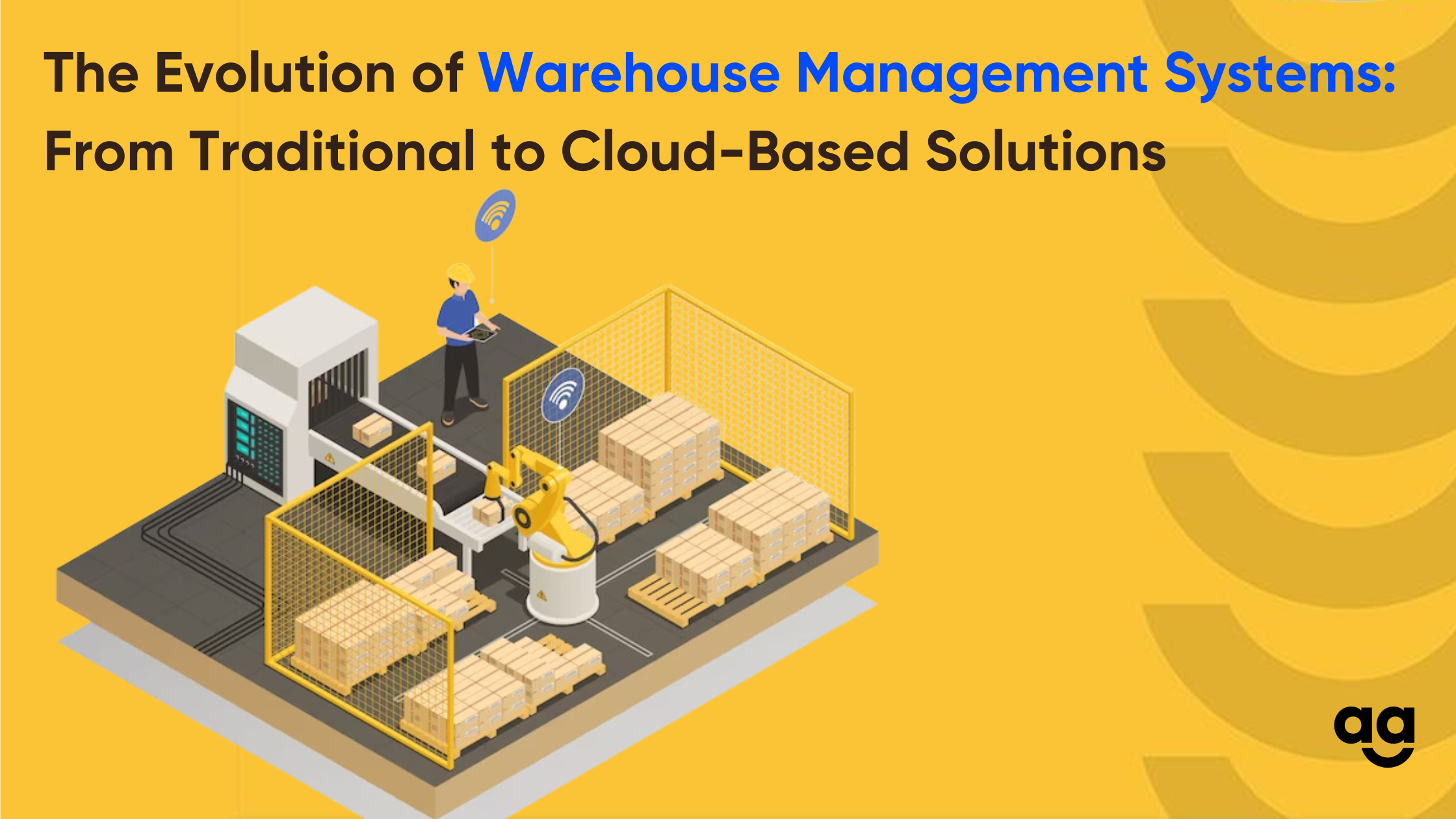Introduction
The warehouse management system (WMS) has undergone significant transformations over the years, evolving from traditional, manual processes to modern, cloud-based solutions. This evolution has been driven by the need for increased efficiency, accuracy, and visibility in warehouse operations.
In this article, we will explore the journey of Warehouse Management Systems, highlighting the key milestones and the benefits of adopting cloud-based solutions.
Evolution of Warehouse Management Systems
In the beginning, warehouse management was primarily a manual process. Workers relied on paper-based systems to track inventory, manage storage locations, and coordinate the movement of goods. This approach was time-consuming, error-prone, and lacked real-time visibility into warehouse operations.
The Introduction of Computerized Systems
The advent of computer technology in the 1960s and 1970s marked a significant shift in warehouse management. Early computerized systems allowed for the automation of certain tasks, such as inventory tracking and order processing. These systems were typically standalone, meaning they were not integrated with other business systems, limiting their overall effectiveness.
The Emergence of Enterprise Resource Planning (ERP) Systems
In the 1980s and 1990s, the development of enterprise resource planning (ERP) systems brought about a new era of warehouse management. ERP systems integrated various business functions, including inventory management, order processing, and financial management. This integration allowed for greater visibility and control over warehouse operations, leading to improved efficiency and accuracy.
However, traditional ERP systems were often complex, expensive, and difficult to implement, making them inaccessible to many small and medium-sized businesses.
The Rise of Cloud-Based Warehouse Management Systems
The emergence of cloud computing in the early 2000s revolutionized the warehouse management landscape. Cloud-based Warehouse Management Systems (WMS) offered a more accessible, cost-effective, and scalable solution for businesses of all sizes.
Accessibility and Affordability
One of the key advantages of cloud-based WMS is their accessibility. Unlike traditional ERP systems, which require significant upfront investment in hardware and software, cloud-based WMS can be accessed via the internet, eliminating the need for costly infrastructure. This makes them more affordable for small and medium-sized businesses, leveling the playing field in the competitive world of warehousing and logistics.
Scalability and Flexibility
Cloud-based WMS offers unparalleled scalability and flexibility.
As businesses grow and their warehousing needs change, cloud-based systems can be easily scaled up or down to accommodate these fluctuations. This allows businesses to respond more effectively to market demands and seasonal variations in inventory levels.
Real-Time Visibility and Data Analytics
Another significant advantage of cloud-based WMS is the real-time visibility they provide into warehouse operations. By leveraging the power of the internet, businesses can access up-to-date information on inventory levels, order status, and warehouse performance from anywhere, at any time. This increased visibility enables better decision-making and more efficient warehouse management.
Furthermore, cloud-based WMS often include advanced data analytics capabilities, allowing businesses to identify trends, optimize processes, and uncover opportunities for improvement.
Integration and Collaboration
Cloud-based WMS are designed to integrate seamlessly with other business systems, such as ERP, Transportation Management Systems (TMS), and e-commerce platforms. This integration enables a more streamlined and efficient supply chain, reducing the risk of errors and delays.
Additionally, cloud-based WMS facilitate collaboration between businesses and their supply chain partners. By providing a centralized platform for sharing information and coordinating activities, these systems promote greater transparency and cooperation among stakeholders.
The Future of Warehouse Management Systems
The future of Warehouse Management Systems (WMS) is exciting, with new technologies and innovations promising to transform the way businesses manage their warehouse operations. Here are some of the trends and developments that are shaping the future of WMS:
Artificial Intelligence and Machine Learning
Artificial intelligence (AI) and Machine Learning are set to play an increasingly important role in the future of WMS. By leveraging AI algorithms and machine learning models, WMS can automate tasks, optimize inventory levels, and provide real-time visibility into warehouse performance.
Robotics and Automation
Robotics and automation are already transforming warehouse operations, and this trend is set to continue in the future. Autonomous mobile robots (AMRs) and other robotic systems can perform tasks such as picking, packing, and shipping, enabling businesses to improve efficiency and reduce costs.
Internet of Things (IoT) and Sensor Technology
The Internet of Things (IoT) and sensor technology are enabling businesses to collect and analyze vast amounts of data from their warehouse operations.
By using sensors to track inventory levels, monitor equipment performance, and optimize workflows, businesses can improve efficiency and reduce waste.
Cloud-Based Solutions
Cloud-based WMS are becoming increasingly popular, offering businesses a more accessible, cost-effective, and scalable solution for managing their warehouse operations.
By leveraging the power of the cloud, businesses can access real-time data and analytics, automate tasks, and optimize their operations from anywhere, at any time.
Augmented Reality (AR) and Virtual Reality (VR)
Augmented reality (AR) and virtual reality (VR) technologies are set to revolutionize the way businesses train their warehouse workers and manage their operations.
By using AR and VR systems, businesses can provide immersive training experiences, visualize warehouse layouts, and optimize workflows.
Conclusion
The evolution of Warehouse Management Systems from traditional, manual processes to modern, cloud-based solutions has been a game-changer for businesses of all sizes. By embracing the power of the cloud, businesses can access affordable, scalable, and flexible WMS that provide real-time visibility, advanced data analytics, and seamless integration with other systems.
As technology continues to advance, the future of Warehouse Management Systems looks brighter than ever.







 Shipping
Shipping







